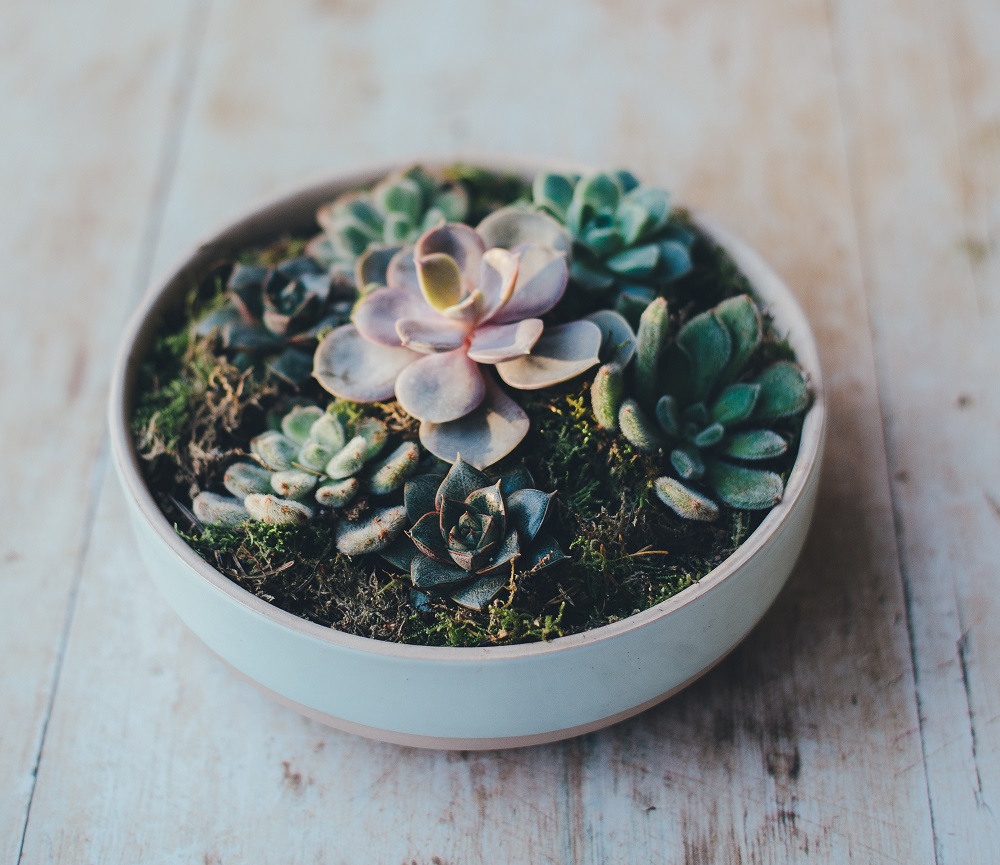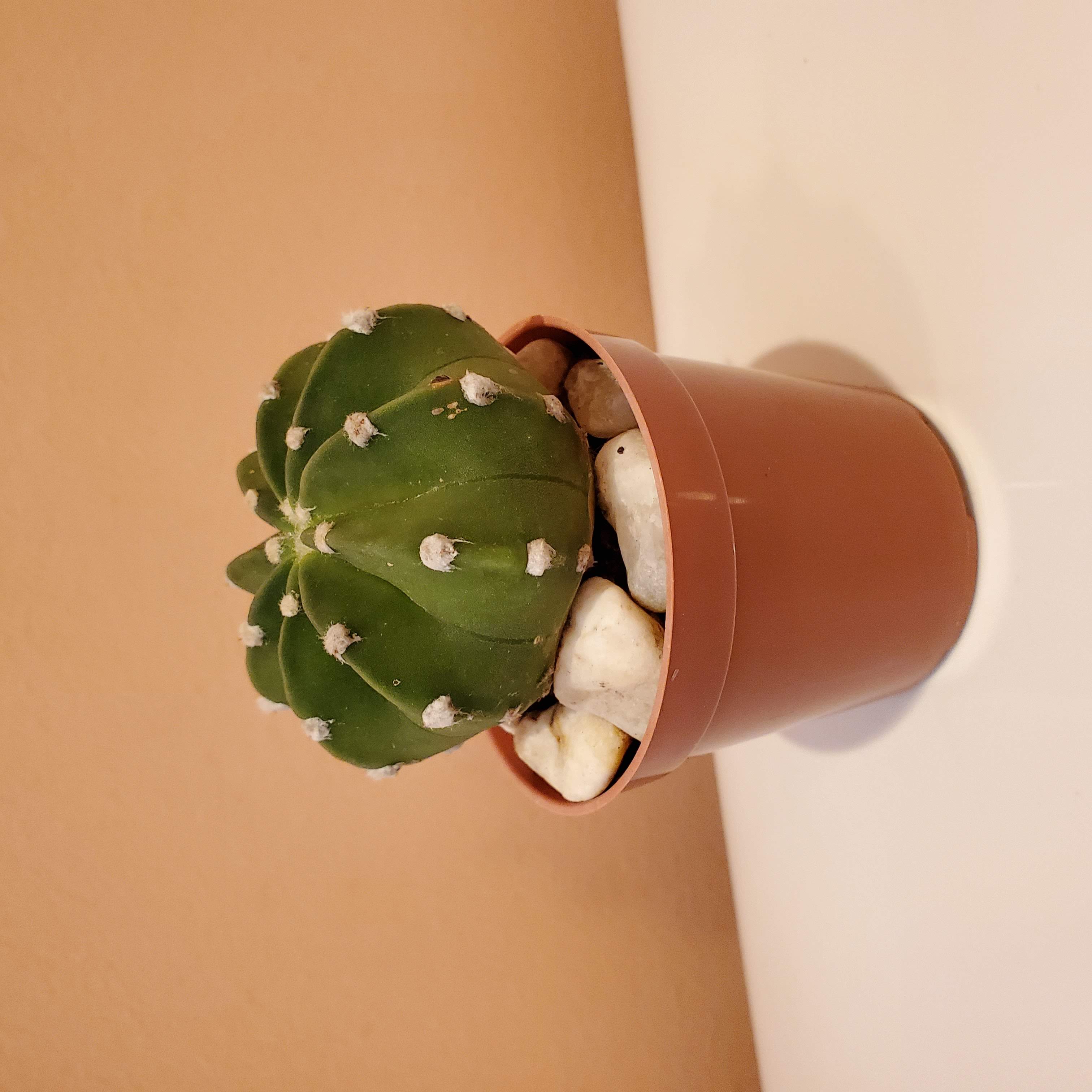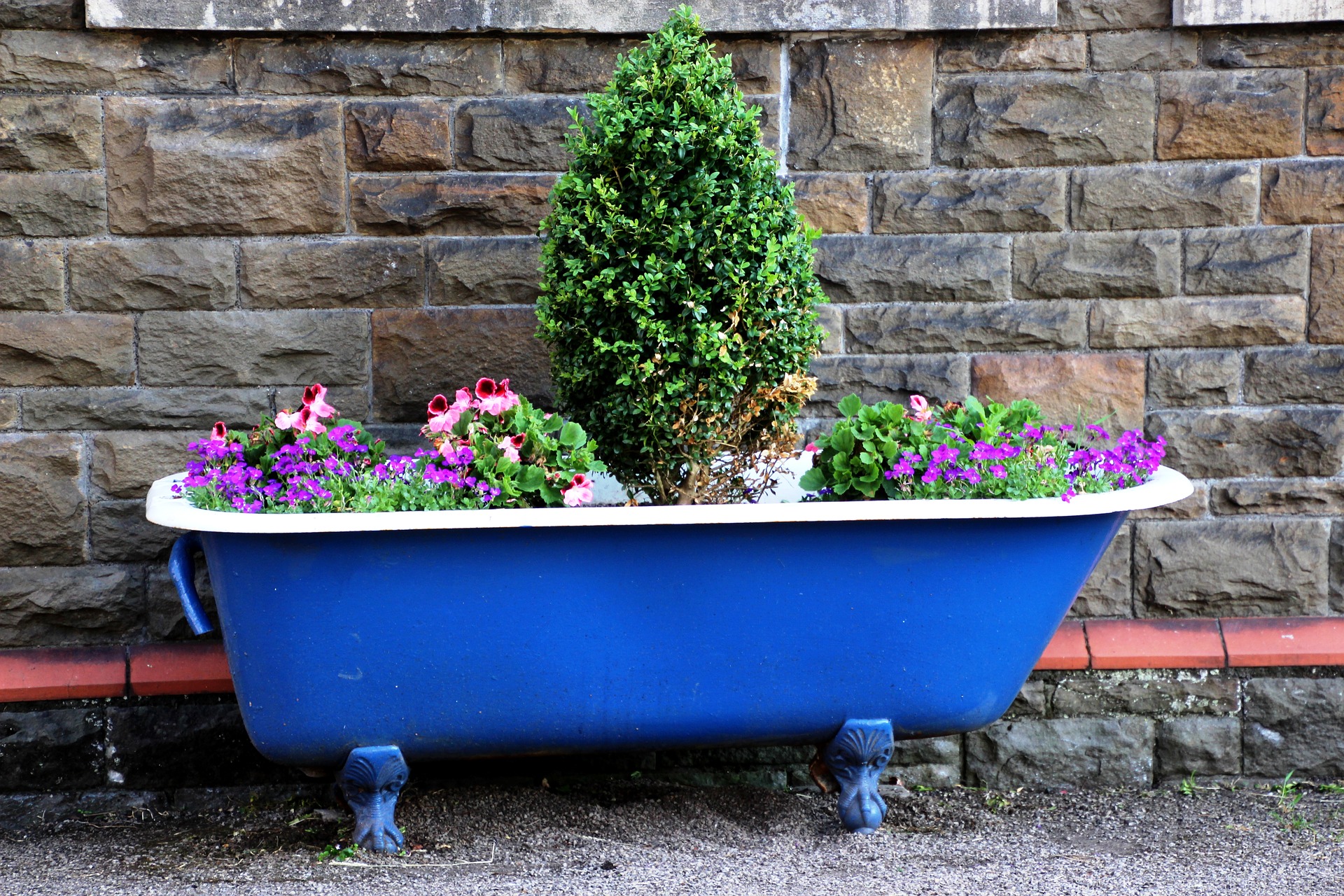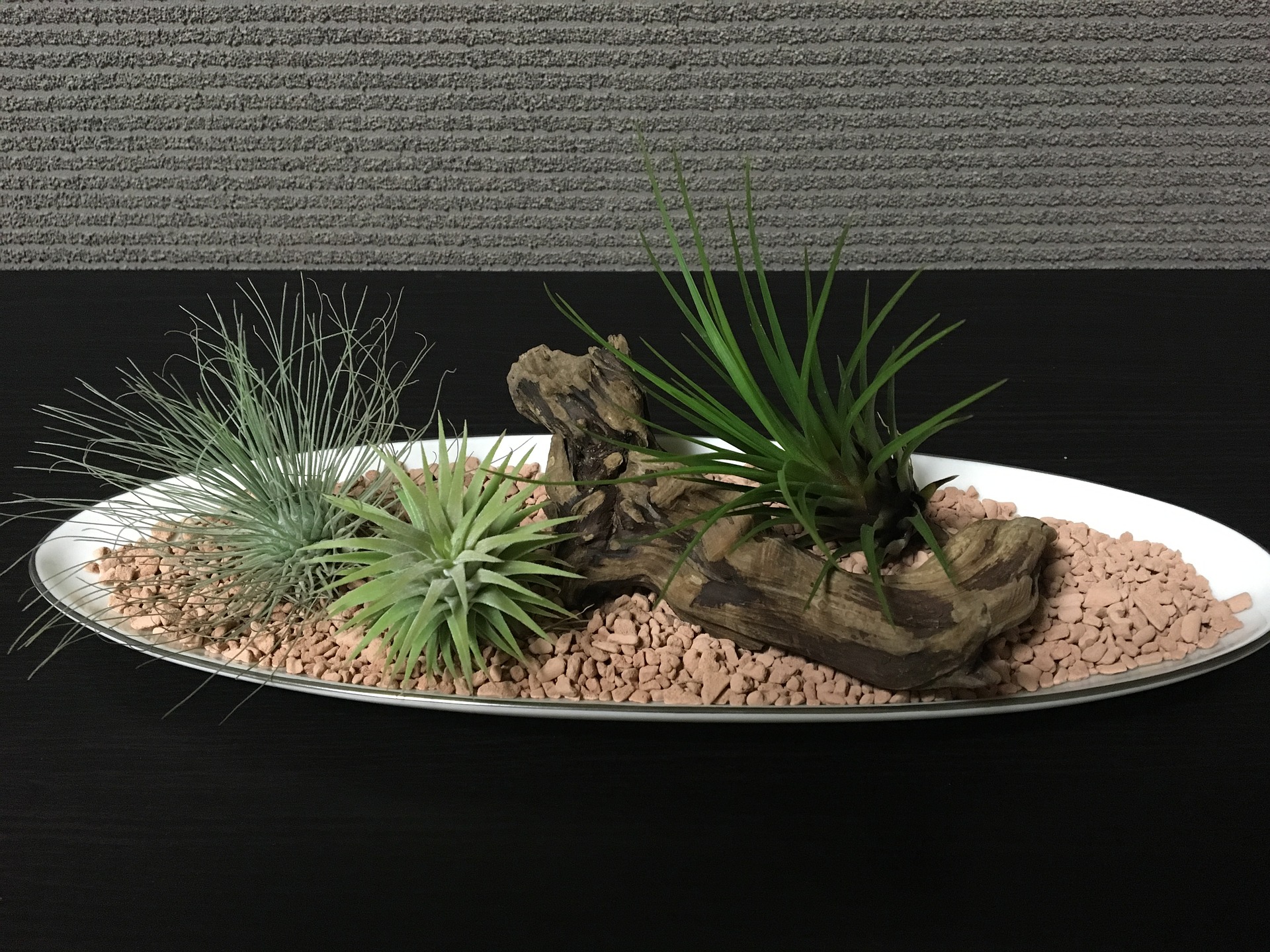- Home
- Dish Garden
Creating a Dish Garden

A dish garden can be a lovely way to enjoy a few small plants in a single container in your home.
Dish gardens are easy to create and maintain, and add a pretty touch of nature to your decor. You can use succulents, leafy plants, or small flowering plants in your garden.
Keep reading to learn more about these enjoyable touches of greenery.
What is a Dish Garden?
A dish garden is any collection of plants growing together in a small container, usually inside. They often are mostly green, leafy plants, maybe with a small amount of flowers. Typically, dish gardens are in a shallow container or basket so they look like a mini landscape in a bowl.
There are many benefits to having a dish garden in your home:
- It’s an easy way to add a variety of houseplants while having only a single container to water and maintain.
- A dish garden brings the beauty and tranquility of nature indoors.
- A dish garden can be an attractive way to display a collection of rocks, crystals, or small figurines in a cohesive landscape setting.
Types of Dish Gardens
These are just some example types of dish gardens you can try:
Simple dish garden
A simple dish garden is great for beginners. Just choose a couple of hardy plants in a shallow container which has good drainage. Make sure the plants you choose have similar requirements (for example, don’t combine a cactus with a moisture-loving polka dot plant).
Cactus dish garden
Cactus are a great choice for a dish garden because they grow quite slowly and require little watering. Just make sure your cactus dish garden is located in a nice sunny spot.
Succulent dish garden
For a succulent dish garden, choose a variety of succulents with different shapes and color leaves, and make sure to choose plants that will stay fairly small.
Classic dish garden
A classic dish garden usually contains a collection of common houseplants in a shallow ceramic pot or small basket container. This is a common gift that can be ordered from most florists.
Desert dish garden
A desert dish garden contains plants that love a dry environment. It might be planted with cactus or succulents, a selection of air plants, or it may be mostly sand and rocks as a Zen dish garden.
European dish garden
The term “european dish garden” is often used to describe a dish garden where each plant is still in its individual container even though it looks like they are all planted together (often the garden is covered with moss to hide the individual pots). Usually they have a combination of greenery and small flowering plants, so the flowering plants can be easily switched out when they finish blooming.
Miniature dish garden
As its name implies, a miniature dish garden is just one in a very small container. It may also be called a tiny dish garden. For a miniature garden, it is important to choose plants with small leaves that grow very slowly so they don’t overwhelm the size of the container.
Dish Garden Plants
What plants go into a dish garden?
Really, any houseplant can be used in a dish garden. The most important requirements for the plants that you choose are:
- They have similar light, water and soil requirements,
- They grow slowly and will stay small,
- They have small-to-medium size leaves (long skinny leaves are okay, but don’t select plants with large wide leaves)
- They don’t have very deep root systems.
These are some common dish garden plants:
- Peace lily
- Dracaena
- Philodendron
- Lucky bamboo
- Pothos
- Nerve plant
- Prayer plant
- Polka dot plant
- Succulents: Jade plant, small snake plants, flowering kalanchoe, zebra plant
- Cactus
Dish Garden Design
How do you make a dish garden? Follow these steps to design and build your very own dish garden:
- Decide on the type of dish garden you want to create (see above)
- Select a shallow container with a drainage hole
- Select 3-5 plants with similar requirements and a variety of color, texture and size
- Fill the container half full of potting soil
- Arrange your plants in the container, with the tallest in the back (or in the center if your dish garden will be viewed from all angles)
- Once you are satisfied with the arrangement, remove the plants from their individual containers and place them in the soil.
- Fill the container with additional soil until it is level with the base of the plants.
- Add decorative elements, if desired, such as: moss or pebbles, small figurines, rocks or stones, etc.
Caring for your Dish Garden
How do you care for a dish garden?
It is really no different from caring for any other of your houseplants. Follow the light and watering directions for the specific plants that you selected. Also, regularly review the arrangement of plants to make sure it’s still pleasing as they grow. You may need to prune any plants that are growing too quickly, remove dead leaves or finished flowers, or replace plants that are not doing well in the group.
You can also change out the decorative elements of your dish garden with the seasons, or as you feel like it. For example, you can add some pinecones and mini gourds or pumpkin figurine in the fall, add colored baubles for christmas or fake snow, add a tiny rabbit figurine for Easter, etc.
- Home
- Dish Garden


